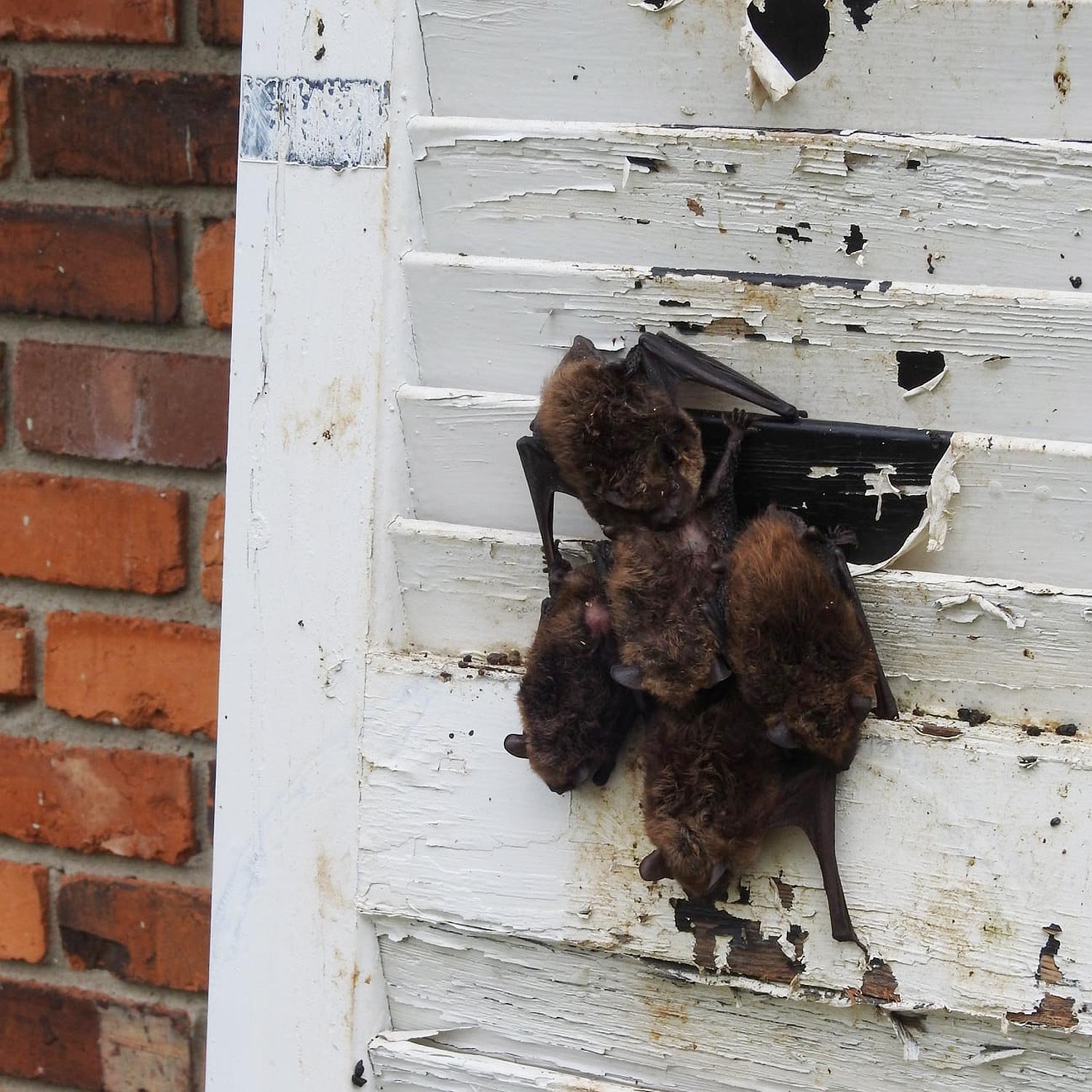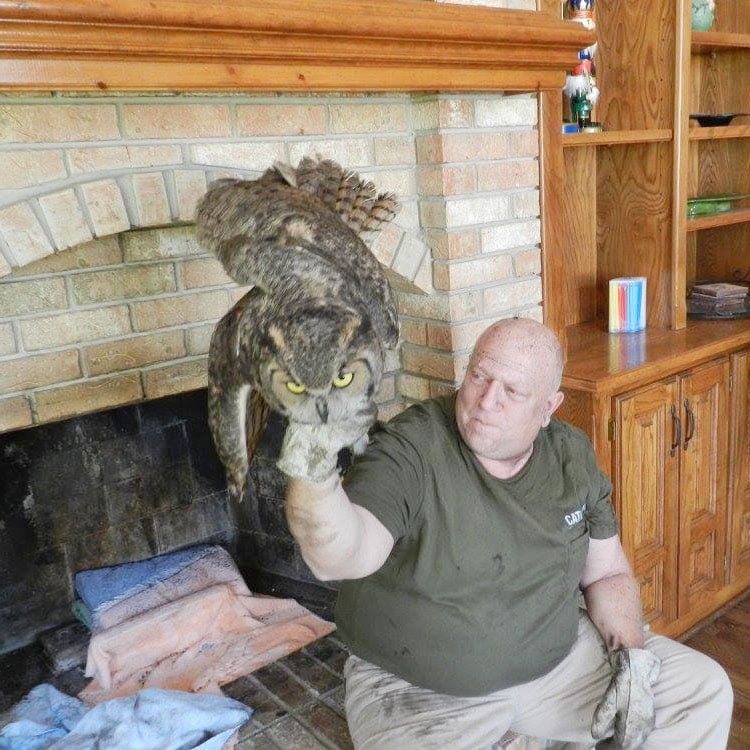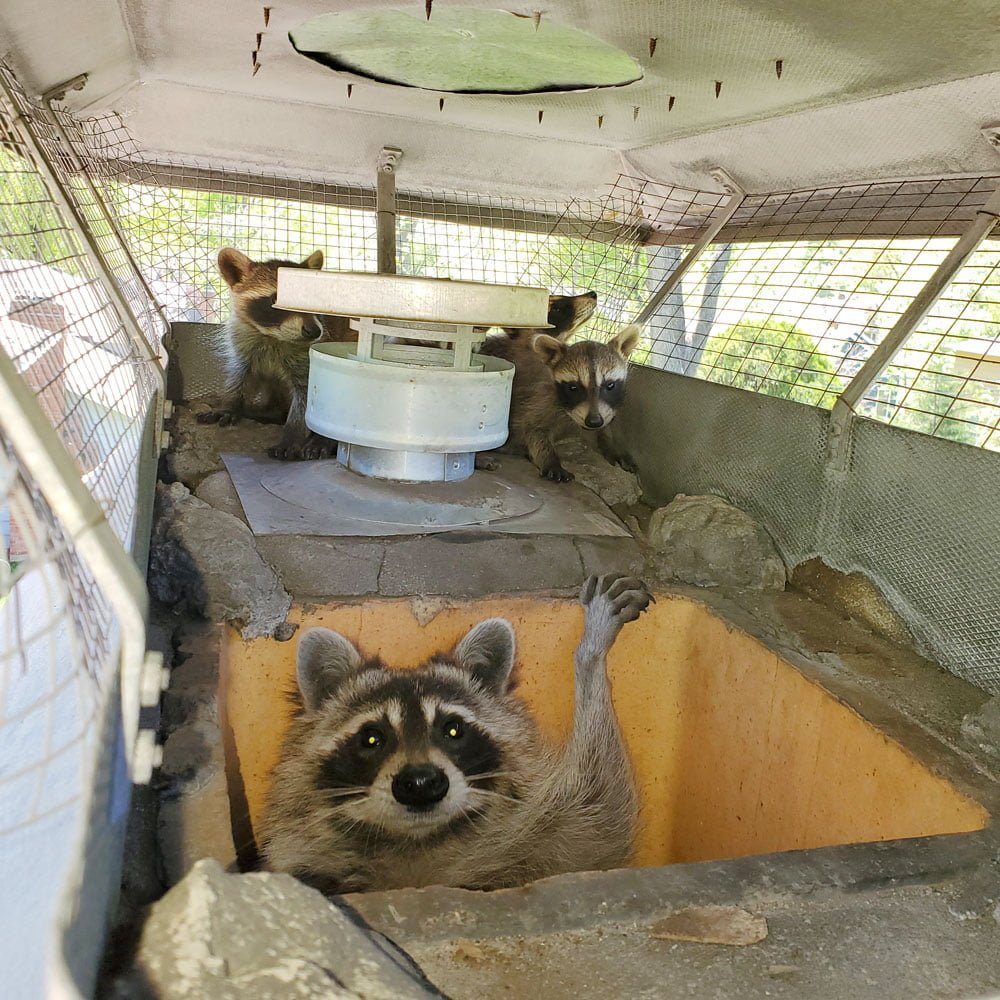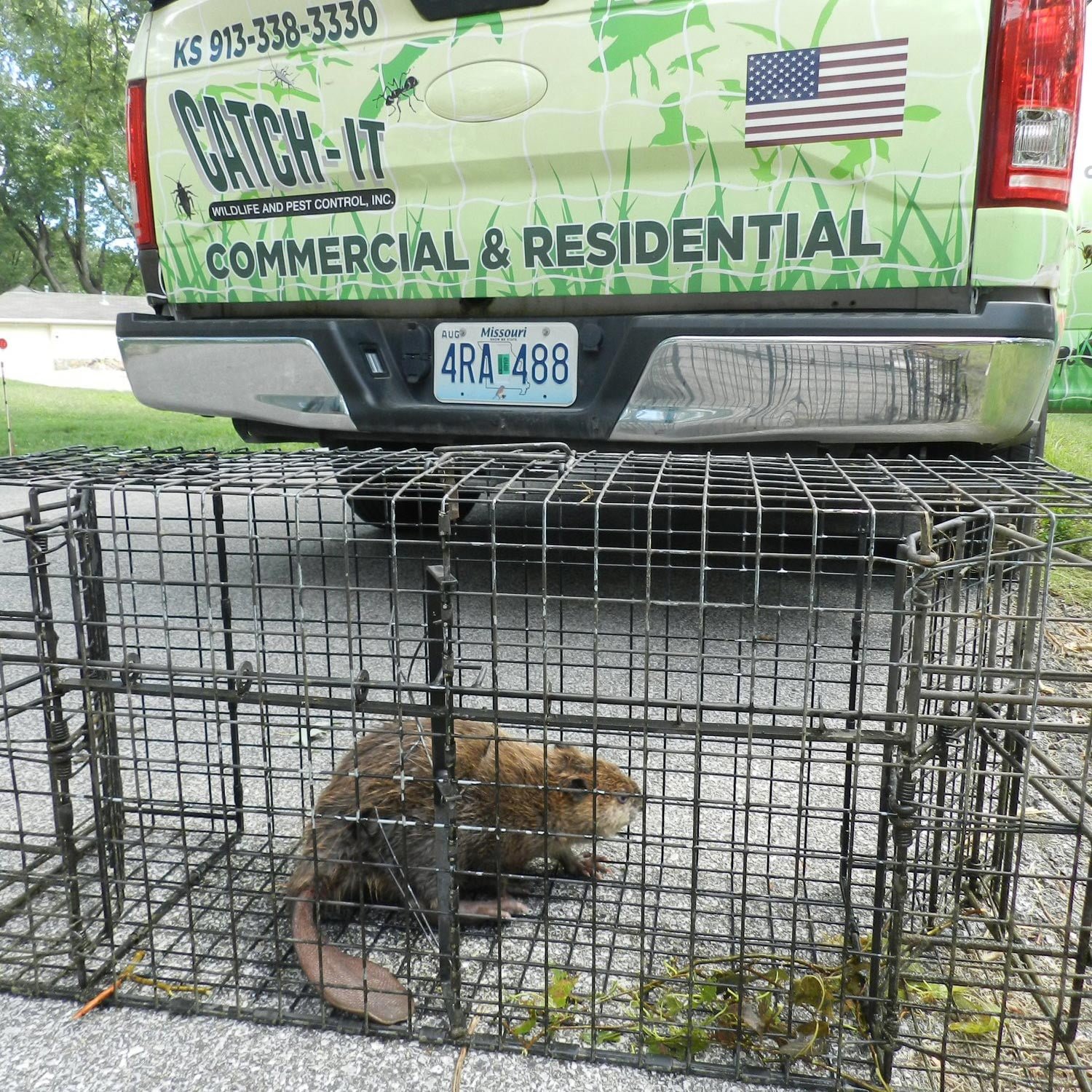De Soto, Kansas, Pest Control and Wildlife Removal Company
Your Trusted, and Local, Professionals
If you have a pest (ants, termites, bed bugs, etc.) or wildlife (bats, raccoons, squirrels, snakes, moles, etc.) problem in your home and business – we can help. We pride ourselves on NOT being a national franchise. We are local professionals with a biologist on staff and have been providing service at reasonable prices since 1989. We are licensed, insured, trusted — and have over 500 positive Google reviews. If you need repair services along with wildlife removal: we are one of the few wildlife organizations in De Soto that can provide quality repair services – saving you the hassle of finding and hiring a contractor.
If you need De Soto wildlife control or pest control — give us a call at (816) 769-3106 or use the contact form. We will reply to your message.







SOME LOCAL STORIES
National Franchise quotes $18k for attic insulation from mice ?! | Click to Expand
A KCMO homeowner called us because they wanted a second opinion before spending $18,000 with an unnamed National Franchise having their attic insulation replaced due to mouse droppings.
First, I had to pick my jaw up off the floor. $18,000 for insulating a house? We've insulated businesses and churches that cost $18,000 or more, but a house? That sounds very high.
Second, mouse droppings?! Sure, no one likes droppings, but let's be reasonable here: mouse droppings are not hazardous. When we say that bat and raccoon droppings/feces/guano are hazardous, we're not simply promoting our services or trying to scare people into calling us - bat and raccoon droppings are hazardous to humans. The CDC lists those hazards on their website. But mouse droppings? First, ok, yes, make sure you don't have active mice. Then second, sure, clean that "stuff" up where you see the mess - but you don't have to throw out thousands of dollars of insulation in your attic and bring in new insulation due to mice.
As I said, the homeowner called us because they wanted a second opinion before spending $18,000 with the unnamed National Franchise. We offer free inspections for insulation estimates only. All our inspections include entering the attic to inspect for any signs of animal or pest activity as well as evidence of damage, such as wire damage, flex tube damage (very common if squirrels or raccoons are present), etc. Our job is to protect your home. Each technician will take pictures to show the homeowner what was found. We can email or text these pictures to the customer for future reference.
We went out and inspected the attic and provided the homeowner with a report along with our recommendations.
What did we find? Two little mouse droppings. That's it. This is not what would be considered an infestation, and even if there was a larger quantity let's not forget that, despite any type of waste being unclean and unpleasant, mouse droppings are not hazardous. You don't have to throw EVERYTHING out. Only in EXTREME situations would we even consider removing attic insulation because of a mouse infestation.
The homeowner called us up later in the day, expressing appreciation for the professionalism and expertise demonstrated by our technician, and saying that they are ending their business relationship with the unnamed National Franchise and will only call us in the future for any type of pest or animal control need.
What's sad about this situation is that this is not an isolated instance. We've heard and seen this before. It's too bad that not all businesses choose to conduct themselves in an ethical and honorable fashion. Whether the franchise was simply being greedy and purposely trying to take advantage of this homeowner, or whether the franchise innocently thought that mice droppings were hazardous and doesn't know what they are doing - neither one of those bodes well for the franchise.
For us? What more can we do besides be here, and available. We're continuing to conduct business the way we have for over 30 years. We might be considered "old school" because we're not greedy and are not quoting high prices for unnecessary work and have spent years studying and gaining knowledge and experience in this arena, but we believe that, in the long run, this is the proper way to do business.
An Overland Park Carpet Beetle Infestation | Click to Expand
An Overland Park, Kansas, homeowner contacted us regarding a beetle infestation. She had literally hundreds of beetles in her window and wasn't sure what was going on. She had already cleaned most of them up when we took our photo (1st photo)
The beetles were carpet beetles -- dermestidae beetles to be exact. These little beetles are only about 1/8th of an inch long when full size (the 2nd photo shows the beetles a bit closer, although the focus was slightly off), and tend to feed on dry organic material.
This story is a good example of why pest control isn't about simply spraying chemicals all over the place (please DON'T ever hire a pest control company that simply sprays everywhere!) - it's more often about understanding insect behavior and habitat, combined with a solid and careful inspection, and from that comes a treatment plan.
The window the beetles were in was the warmest, most sun-exposed window of the house --- they were trying to get out of the house. Without finding any signs of beetles upstairs or downstairs we knew the source was the main floor. During the course of the inspection, our technician spotted a single beetle under the sink (3rd photo) and knew he was on to something. We soon had solved the puzzle.
About a year previously, the homeowner had a problem with mice and had purchased several DIY mouse bait stations. These bait stations are sealed. However, we handle professional mouse and pest removal and know what is inside of DIY mouse bait stations: dry organic food to attract mice. We opened the mouse bait station and instantly found the source of the beetle infestation. We removed all of the DIY mouse bait stations and did some limited spraying. Problem solved with no recurrence.
Bats Entering BASEMENT Through a Broken Chimney | Click to Expand
Here's a bat removal job that we handled in Leavenworth, Kansas. The call came in the spring and when we arrived to inspect the home the bats already had pups (babies). We quickly found the access point: a damaged chimney crown. The bats were using this to access a heater vent and then getting down into the the homeowner's basement - which brings up an interesting point: bats don't always get into attics, it is not uncommon for them to suddenly appear in other parts of a home.
Bats are an important part of our local ecology and are protected by law. We needed to find a way to protect the bats and their pups until the pups were mature and able to live on their own - but at the same time it's not really acceptable to have bats flying around this dear lady's basement.
We installed a mesh screen in the basement so that the bats were contained to a small area and would not be flying around. A few months later the pups had matured and we installed one-way doors so that the bats could exit, but not re-enter, the home.
Next we repaired the damaged chimney crown. This is an important part of what sets us apart from other bat control companies: we not only do repair work, but we do quality repair work. With other companies you often have to hire a contractor to handle repairs.
The photo shows the repaired chimney crown. Later, we also installed a chimney cap, and it's too bad we forgot to get a photo of the final chimney!
Finding raccoons in the attic too late | Click to Expand
This is a great example of what can happen with undetected animals living in your attic or home. A family of raccoons got into this house's attic and was living there, unnoticed, for quite some time. The weight of the animals' waste (both urine, and feces) built up to the point where the living room ceiling completely collapsed.
The good news is that we were able to completely remediate everything for the homeowners, and it was all covered by insurance. Yet the moral remains: if you hear something odd in your attic, make sure to get it checked out sooner, rather than later.
Our De Soto, KS, Services Include:
Contact Us Today in De Soto
Feel Comfortable In Your Home Again
Hi there, I'm Steve, the Owner of Catch-It, and I personally handle all incoming inquiries from the website. If you have a question or need help, send me a message via the form below and I'll be in touch with you soon (often the same day). If your query is urgent, please give us a call at (816) 769-3106.
Why Choose Catch-It?
Over 30 years in business and 500+ Google reviews!
You can call a big national franchise with high employee turnover and inflated prices - or you can call us, local experts who have been doing this for almost 35 years and have thousands of satisfied customers here in De Soto/the Kansas City area.
We love animals!
We love animals, which is why we have a biologist on staff. Before hiring any Wildlife Control company (whether they are a National Franchise or a small one-person operation that's been in business 2 years) you should ask if they have a biologist on their team!
We love animals and want to see them live happy, safe lives. Our preferred method of animal control is always safe and humane relocation. If lethal methods are required we carefully utilize humane methods approved by the American Veterinary Medical Association.
True experts!
We can identity different types of animals, often by reviewing the damage our customers have experienced. The mitigation/removal approach we take varies per animal, species, and even customer. We have been doing specialty wildlife and pest control work for decades and have seen it all. We've solved every animal and pest problem that exists -- don't hesitate to reach out and let us help you.
De Soto, KS, City Information and Sources
De Soto, Kansas, is a city rich in history and community spirit, located along the Kansas River in Johnson and Leavenworth counties. As part of the Kansas City Metropolitan Area (located 28 miles from Downtown Kansas City), De Soto offers a blend of suburban tranquility and metropolitan convenience. With a population of 6,118 as of the 2020 census, this city provides a close-knit community atmosphere while being just a short drive from the urban amenities of Kansas City.
Founded in 1828 and incorporated in 1897, De Soto’s history is deeply intertwined with the Native American tribes that once inhabited the area, including the Shawnee and Osage peoples. The city was named after the 16th-century Spanish explorer Hernando de Soto.
De Soto is known for its commitment to education, with the De Soto School District serving as one of the city’s largest employers. The city’s median household income is $60,568. De Soto’s natural beauty is highlighted by its location near the Kansas River and its surrounding parks and recreational areas, providing residents with ample opportunities for outdoor activities.
The city also plays host to a variety of wildlife, including species such as bats, beavers, birds, and deer, which are common in suburban Johnson and Leavenworth Counties. We are involved in efforts to help ensure that local residents can coexist peacefully with the area’s natural inhabitants, enhancing the appeal of De Soto for those who appreciate the beauty of nature.
With its rich history, strong community, and beautiful natural surroundings, De Soto offers an ideal setting for families and individuals looking for a peaceful suburban life within easy reach of a major metropolitan area.
Sources:
- https://www.desotoks.us/
- https://www.usd232.org/
- https://www.census.gov/quickfacts/fact/table/desotocitykansas/PST045223
- https://www.jccc.edu/about/campus/community-outreach/desoto.html
- https://en.wikipedia.org/wiki/De_Soto,_Kansas
- https://www.johnson.k-state.edu/natural-resources/agent-articles/wildlife/wildlife-in-suburban-johnson-county.html
- https://www.leavenworth.k-state.edu/
Frequently Asked Questions
Do you have the proper insurance to protect our home or business?
Yes, we carry Workmen Compensation and General Liability insurance of $1 million.
Are you properly licensed to do Wildlife Control work?
Yes, we are licensed as required by any state and comply with all municipal, state, and federal laws.
What type of training do you and your technicians have?
Most of our Wildlife Technicians have a Wildlife Biology Degree, Biology Degree, Wildlife Management Degree, or degree in a very similar or relevant field. We also understand that learning is a never-ending process. We strive to keep abreast of the most recent technologies and techniques for resolving wildlife conflicts. The President of Catch-It Wildlife Damage Control, Inc. has been trapping for over 30 years and started the company in 1989.
Will you do an inspection of our home to find what and where the problem is?
Yes, we do a complete and thorough inspection of the exterior portion of the home. We may also check the home from the ground or roof if it is necessary. We will do whatever is needed to resolve your problem. If any other problem is found during this inspection, we will inform you of the situation and resolve the issue if requested. Examples would be bird entry points or any other animal infestation point.
Will you inspect the attic also?
Absolutely, we will check for any wiring that may have been gnawed on by animals or damaged by pests. We will notify you of any other problems immediately after we discover them. (keep in mind that, while we do check for wire damage and we can handle general construction repairs, we are not electricians and do not handle electrical repairs)
Can you repair the damage done to my home by animals or pests?
Yes, we can complete most repairs. We install sheet metal over points of entry to prevent any future infestations. We also install chimney caps, roof vents, weather stripping, screen louvered vents, replace wood shingles and install bird-proof covers over dryer and bathroom vents. Of course, this is only a sampling of what we may do – we will do whatever is necessary within our means to repair the damage.
Do you use lethal methods on wildlife?
Yes, we use lethal and live trapping methods. In most situations the lethal methods are the most efficient. Also, by using this method there will be no fear of the animal returning to cause further problems for you or your neighbors. Lethal methods are the norm in the wildlife control industry.
When an animal is caught when will it picked up?
Traps are checked 7 days a week, once every 24 hours. Customers are asked to contact their Wildlife Technician once an animal is in a trap that has been placed. If you contact your technician, the animal will be picked up the same day and usually within thirty minutes to an hour. Times may vary, yet picking up animals as quickly as possible is one of our top priorities!